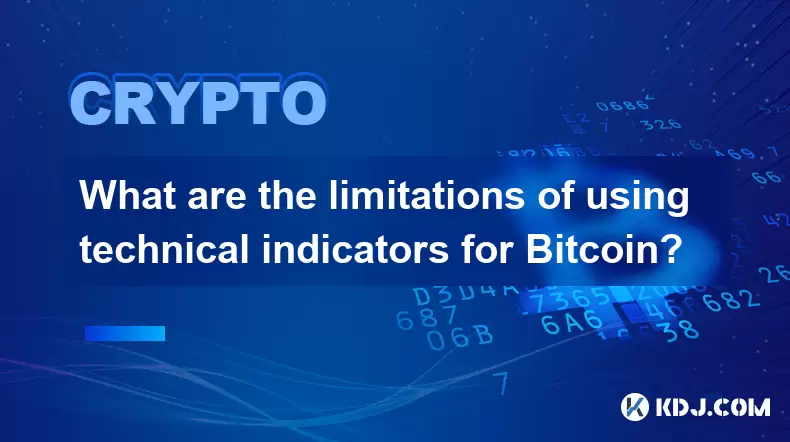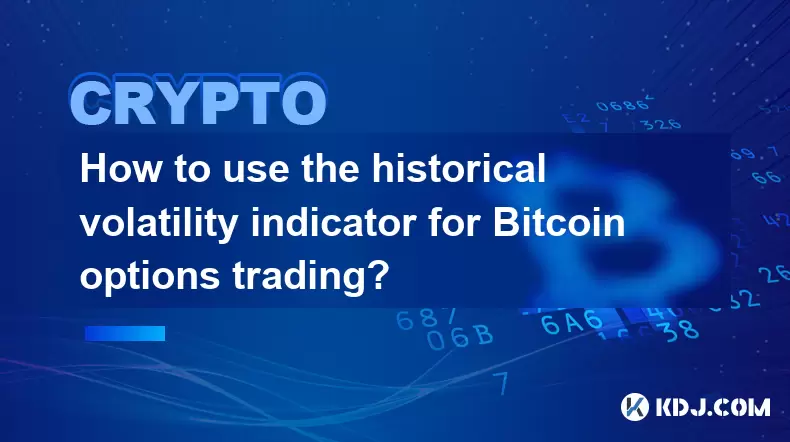-
 Bitcoin
Bitcoin $108,810.2974
0.81% -
 Ethereum
Ethereum $2,547.2589
2.01% -
 Tether USDt
Tether USDt $1.0003
0.00% -
 XRP
XRP $2.2725
2.39% -
 BNB
BNB $662.9418
1.38% -
 Solana
Solana $151.6325
3.50% -
 USDC
USDC $1.0000
-0.01% -
 TRON
TRON $0.2849
0.15% -
 Dogecoin
Dogecoin $0.1705
4.70% -
 Cardano
Cardano $0.5855
2.00% -
 Hyperliquid
Hyperliquid $39.3158
1.30% -
 Sui
Sui $2.9100
0.97% -
 Bitcoin Cash
Bitcoin Cash $495.1485
2.64% -
 Chainlink
Chainlink $13.4389
2.55% -
 UNUS SED LEO
UNUS SED LEO $9.0260
0.06% -
 Avalanche
Avalanche $18.2104
2.50% -
 Stellar
Stellar $0.2440
3.01% -
 Toncoin
Toncoin $2.9143
6.06% -
 Shiba Inu
Shiba Inu $0.0...01181
3.25% -
 Hedera
Hedera $0.1578
0.99% -
 Litecoin
Litecoin $87.8055
1.82% -
 Monero
Monero $317.3492
1.14% -
 Polkadot
Polkadot $3.3902
1.63% -
 Dai
Dai $0.9999
-0.01% -
 Ethena USDe
Ethena USDe $1.0001
-0.01% -
 Bitget Token
Bitget Token $4.4073
0.41% -
 Uniswap
Uniswap $7.3972
7.15% -
 Pepe
Pepe $0.0...01003
4.10% -
 Aave
Aave $275.5648
2.57% -
 Pi
Pi $0.4610
-0.26%
Is there a limit on the transaction amount for Bitcoin spot trading
Bitcoin spot trading limits vary by exchange, influenced by verification levels, liquidity, and network fees; always check specific limits before large transactions.
Apr 08, 2025 at 08:56 am

?
Bitcoin's decentralized nature and the absence of a central authority governing transactions mean there isn't a universally imposed limit on the transaction amount for spot trading. However, several factors can effectively limit the size of a single transaction. Understanding these limitations is crucial for high-volume traders.
Exchange-Specific Limits
Each cryptocurrency exchange sets its own limits on the maximum amount of Bitcoin that can be traded in a single spot transaction. These limits vary significantly depending on factors such as the exchange's risk management policies, liquidity, and regulatory compliance requirements. Some exchanges may have relatively low limits for new or unverified users, increasing them as the user's trading history and account verification level improve. Always check the specific limits outlined on your chosen exchange's website before attempting a large transaction.
- Verification Levels: Many exchanges implement a tiered verification system. Higher verification levels, often requiring identity verification and proof of address, unlock higher transaction limits.
- Trading Fees: While not directly a limit on the amount, extremely large transactions can incur substantial trading fees, making them less economically viable. These fees are typically calculated as a percentage of the transaction value.
- Liquidity: Even if an exchange doesn't have an explicit limit, the available liquidity for Bitcoin might restrict the size of a trade you can execute without significantly impacting the price. Large buy orders, for instance, can push the price up considerably if there aren't enough sellers willing to meet the demand at the current price.
Network Fees (Transaction Fees)
Bitcoin transactions are subject to network fees, also known as transaction fees or miner fees. These fees are paid to miners to incentivize them to include your transaction in a block on the Bitcoin blockchain. The size of the fee is directly related to the transaction's size and the network congestion. Larger transactions generally require higher fees to ensure timely processing. During periods of high network congestion, even relatively small transactions can incur high fees.
- Transaction Size: The amount of data included in a Bitcoin transaction affects its size and thus the fee. Larger transactions, involving more inputs and outputs, tend to be more expensive to process.
- Network Congestion: When the Bitcoin network is busy, miners prioritize transactions with higher fees. This means that during periods of high activity, you may need to pay significantly higher fees to ensure your transaction is processed quickly.
- Fee Estimation Tools: Most Bitcoin wallets and exchanges provide fee estimation tools that help you determine the appropriate fee based on the desired transaction speed. It's crucial to use these tools to avoid delays or transaction failures due to insufficient fees.
On-Chain vs. Off-Chain Transactions
The method of transaction also influences potential limitations. On-chain transactions are recorded directly on the Bitcoin blockchain. Off-chain solutions, such as the Lightning Network, allow for faster and cheaper transactions, potentially bypassing some of the limitations associated with on-chain transactions. However, off-chain solutions require setting up channels and might not be suitable for all trading scenarios.
Counterparty Limits
The counterparty involved in the trade might have their own internal limits. If you're trading with a specific individual or entity, they may have restrictions on the amount they're willing to buy or sell at any given time. This is particularly relevant in peer-to-peer (P2P) trading.
Regulatory Considerations
Regulatory frameworks in different jurisdictions can indirectly influence transaction limits. Anti-money laundering (AML) and know-your-customer (KYC) regulations may require exchanges to monitor and report large transactions, potentially leading to stricter limits or delays for very large trades.
Practical Implications
Understanding these factors is crucial for large-scale Bitcoin spot trading. Traders should carefully consider exchange limits, network fees, and potential counterparty limitations when planning significant trades. Using fee estimation tools and choosing appropriate transaction methods can help optimize the process and minimize costs.
Frequently Asked Questions
Q: What is the average transaction fee for a Bitcoin spot trade?
A: The transaction fee is highly variable and depends on network congestion and the size of the transaction. It can range from a few cents to hundreds of dollars.
Q: Can I bypass transaction limits by splitting a large trade into smaller ones?
A: You can, but this might increase the overall transaction fees and add complexity.
Q: Are there any exchanges without transaction limits?
A: While some exchanges may advertise higher limits, all exchanges have some form of limit, whether explicit or implicit due to liquidity constraints.
Q: How do I find out the transaction limits on my chosen exchange?
A: Check the exchange's website, usually in their fees or trading limits section. Contact their customer support if you cannot find the information.
Q: What is the difference between on-chain and off-chain Bitcoin transactions?
A: On-chain transactions are recorded on the public Bitcoin blockchain, while off-chain transactions utilize secondary networks like the Lightning Network for faster and cheaper transactions.
Q: How do I choose the right transaction fee?
A: Use the fee estimation tools provided by your wallet or exchange. Higher fees ensure faster transaction confirmation. Lower fees may result in longer processing times.
Disclaimer:info@kdj.com
The information provided is not trading advice. kdj.com does not assume any responsibility for any investments made based on the information provided in this article. Cryptocurrencies are highly volatile and it is highly recommended that you invest with caution after thorough research!
If you believe that the content used on this website infringes your copyright, please contact us immediately (info@kdj.com) and we will delete it promptly.
- Litecoin Breakout Watch: What Traders Need to Know Now
- 2025-07-06 16:50:13
- Bitcoin, Solana, Ethereum: Decoding the Latest Buzz on the Blockchain
- 2025-07-06 16:50:13
- Widnes Resident's 50p Could Be Your Ticket to Easy Street: Rare Coin Mania!
- 2025-07-06 16:55:13
- Bitcoin, Solaris Presale, and Token Rewards: What's the Buzz?
- 2025-07-06 16:55:13
- Ethereum Under Pressure: Price Drop Amid Global Uncertainties
- 2025-07-06 17:00:13
- XRP, SEC Case, and Prosperity: A New Era for XRP Holders?
- 2025-07-06 17:10:13
Related knowledge

What is the Woodies CCI indicator and can it be used for Bitcoin?
Jul 04,2025 at 05:14pm
Understanding the Woodies CCI IndicatorThe Woodies CCI indicator is a variation of the traditional Commodity Channel Index (CCI), which was originally developed by Donald Lambert. The standard CCI measures the current price level relative to an average price over a given period, typically 14. However, the Woodies version modifies this calculation to mak...

How to use indicators to trade the opening range breakout for Bitcoin CME futures?
Jul 05,2025 at 07:35pm
What Is the Opening Range Breakout Strategy?The opening range breakout (ORB) strategy is a popular trading technique used in both traditional markets and cryptocurrency futures, particularly for Bitcoin on the CME. This method involves identifying a specific price range formed during the early phase of a trading session and then taking positions when th...

What does a bearish cross on the Stochastic RSI mean for Bitcoin?
Jul 05,2025 at 07:18pm
Understanding the Stochastic RSI IndicatorThe Stochastic RSI (Relative Strength Index) is a momentum oscillator used in technical analysis to identify overbought or oversold conditions in an asset's price. It combines two well-known indicators — the RSI and the Stochastic Oscillator — to provide more nuanced signals than either could alone. The Stochast...

What are the limitations of using technical indicators for Bitcoin?
Jul 06,2025 at 03:35am
Understanding the Role of Technical Indicators in Cryptocurrency TradingIn the realm of Bitcoin trading, technical indicators are tools used by traders to analyze historical price data and volume to predict future price movements. These indicators—such as Moving Averages, Relative Strength Index (RSI), and MACD—are widely adopted across traditional fina...

How to use the historical volatility indicator for Bitcoin options trading?
Jul 06,2025 at 04:14am
Understanding the Historical Volatility IndicatorThe historical volatility indicator (HV) is a statistical measure used to assess the price fluctuations of an asset over a specific time period. In the context of Bitcoin options trading, this metric helps traders evaluate past price movements to anticipate potential future swings. Unlike implied volatili...

Best indicator for confirming chart patterns like head and shoulders on Bitcoin
Jul 06,2025 at 01:07pm
Understanding Chart Patterns in Cryptocurrency TradingIn the volatile world of Bitcoin trading, chart patterns serve as critical tools for identifying potential price movements. Among these, the head and shoulders pattern is one of the most reliable reversal indicators. Recognizing this formation requires not only visual identification but also confirma...

What is the Woodies CCI indicator and can it be used for Bitcoin?
Jul 04,2025 at 05:14pm
Understanding the Woodies CCI IndicatorThe Woodies CCI indicator is a variation of the traditional Commodity Channel Index (CCI), which was originally developed by Donald Lambert. The standard CCI measures the current price level relative to an average price over a given period, typically 14. However, the Woodies version modifies this calculation to mak...

How to use indicators to trade the opening range breakout for Bitcoin CME futures?
Jul 05,2025 at 07:35pm
What Is the Opening Range Breakout Strategy?The opening range breakout (ORB) strategy is a popular trading technique used in both traditional markets and cryptocurrency futures, particularly for Bitcoin on the CME. This method involves identifying a specific price range formed during the early phase of a trading session and then taking positions when th...

What does a bearish cross on the Stochastic RSI mean for Bitcoin?
Jul 05,2025 at 07:18pm
Understanding the Stochastic RSI IndicatorThe Stochastic RSI (Relative Strength Index) is a momentum oscillator used in technical analysis to identify overbought or oversold conditions in an asset's price. It combines two well-known indicators — the RSI and the Stochastic Oscillator — to provide more nuanced signals than either could alone. The Stochast...

What are the limitations of using technical indicators for Bitcoin?
Jul 06,2025 at 03:35am
Understanding the Role of Technical Indicators in Cryptocurrency TradingIn the realm of Bitcoin trading, technical indicators are tools used by traders to analyze historical price data and volume to predict future price movements. These indicators—such as Moving Averages, Relative Strength Index (RSI), and MACD—are widely adopted across traditional fina...

How to use the historical volatility indicator for Bitcoin options trading?
Jul 06,2025 at 04:14am
Understanding the Historical Volatility IndicatorThe historical volatility indicator (HV) is a statistical measure used to assess the price fluctuations of an asset over a specific time period. In the context of Bitcoin options trading, this metric helps traders evaluate past price movements to anticipate potential future swings. Unlike implied volatili...

Best indicator for confirming chart patterns like head and shoulders on Bitcoin
Jul 06,2025 at 01:07pm
Understanding Chart Patterns in Cryptocurrency TradingIn the volatile world of Bitcoin trading, chart patterns serve as critical tools for identifying potential price movements. Among these, the head and shoulders pattern is one of the most reliable reversal indicators. Recognizing this formation requires not only visual identification but also confirma...
See all articles

























































































